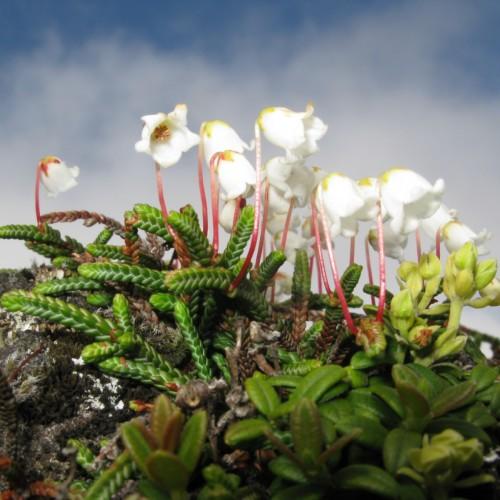
Clubmoss Mountain Heather
Cassiope lycopodioides
Also Known As - Clubmoss Cassiope,Ground Pine HeatherWatering:
Average
Hardiness Zone:
Sun:
full sun,part shade
Cones:
Yes
Edible:
Yes
Leaf:
Yes
Growth Rate:
Low
Care Level:
Medium
watering
Shagbark Hickory thrives in well-drained and moist soil. During the warmer months, you should water the plant deeply once to twice a week, allowing the top few inches of soil to dry between waterings. If rainfall is less than an inch a week, add additional water in order to keep the soil consistently moist. During the cooler months, water less often, only when the soil is completely dry and the leaves are beginning to droop. It is important to avoid overwatering.
sunlight
Shagbark Hickory trees will thrive in areas with full sun. This species prefers a full 6 to 8 hours of sunlight a day. This species is native to most parts of North America, meaning it is best suited for sunny, hot summer regions. During the spring and summer months, Shagbark Hickory trees can benefit from more sunlight, but it is not necessary. During the winter months, however, the amount of sunlight decreases significantly and the tree struggles to get the necessary amount of sunlight it needs. To ensure that Shagbark Hickory trees have enough sunlight, it is beneficial to plant them in a spot that receives at least 6 hours of full sun a day.
pruning
Shagbark Hickory should be pruned in the late winter, before the growing season begins. Pruning should be done sparingly, removing only dead, diseased, and damaged branches. The amount of pruning should be limited to only 10-20% of the tree’s total branches and should not be done in consecutive years. Pruning should also be tailored to the shape of the tree—it should preserve the natural shape of the tree, with no harsh cuts or drastic changes. When removing whole branches, take care to retain the natural shape of the branches and not leave stubs that could deteriorate over time.
